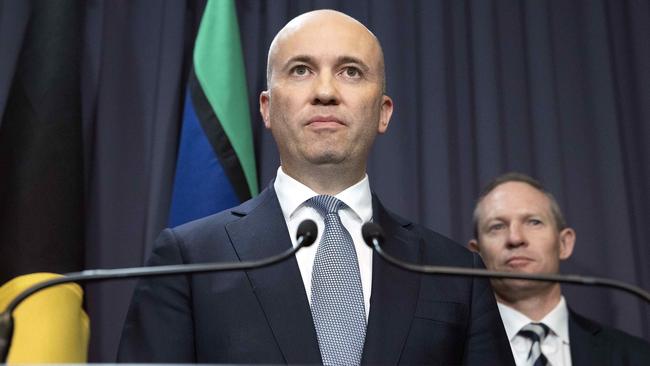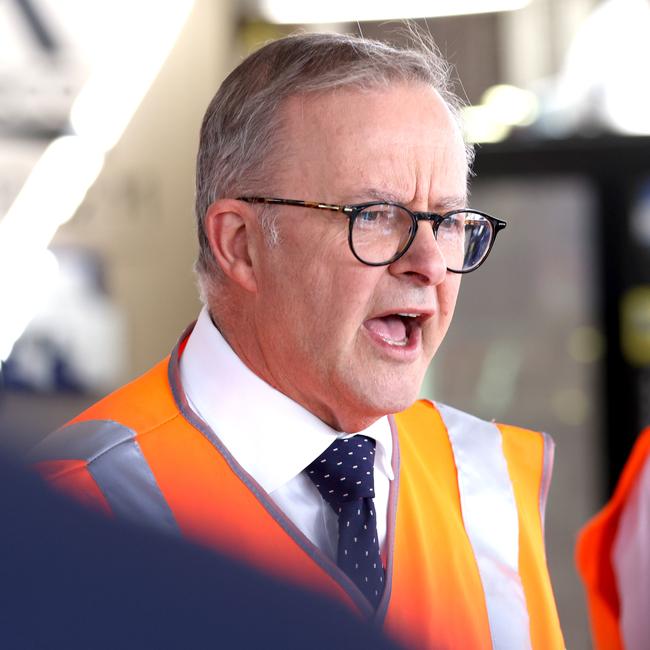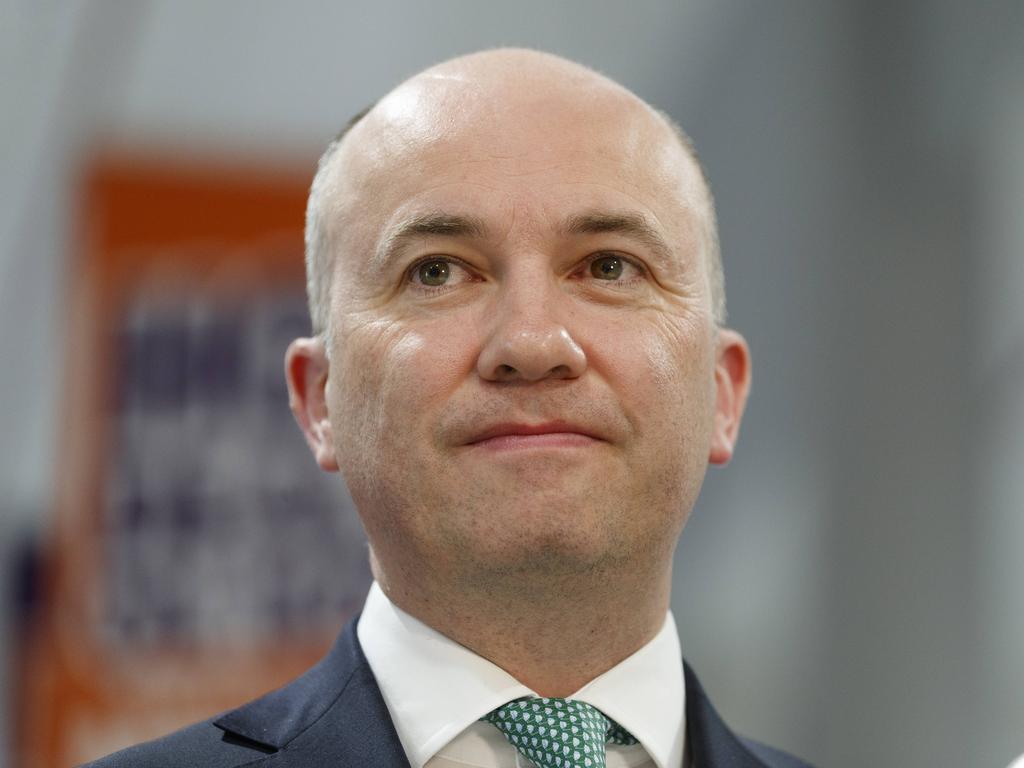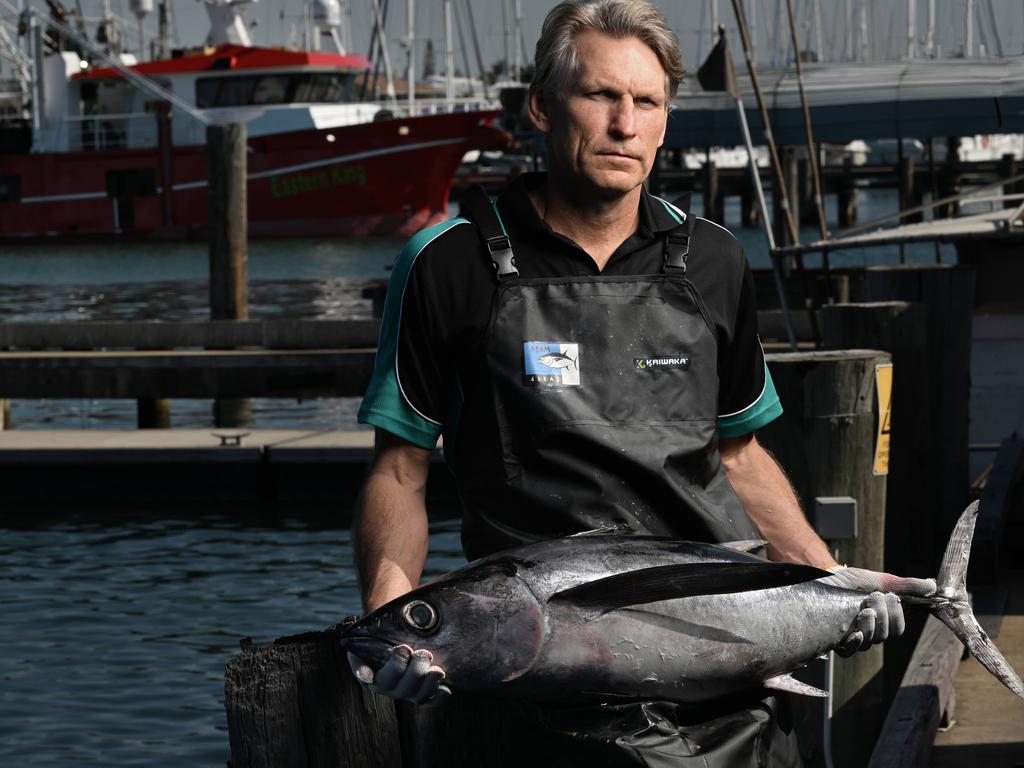Let foreign workforce in, Anthony Albanese told
NSW demands the PM ‘stamp the passports’ of tens of thousands of foreign workers and create a new class of low-skilled visas.

NSW is demanding Anthony Albanese “stamp the passports” of tens of thousands of foreign workers waiting to get to Australia and create a new class of low-skilled visas to address a “worker drought” that could leave the country $80bn poorer.
With the OECD’s most recent economic outlook highlighting that Australia is grappling with the second worst skills crisis in the developed world, NSW Treasury projections forecast a shortfall of 304,000 employees in that state alone by 2025-26, exacerbated by low migration.
The projections come as new KPMG modelling shows the nation has more than half a million fewer skilled foreign workers than it did before the pandemic and calls increase for the Prime Minister to establish a national population policy.
Writing in The Australian on Monday, NSW Treasurer Matt Kean says his state needs urgent action to boost the supply of workers. Mr Kean says there are “practical solutions available”, including the commonwealth temporarily increasing the number of skilled visa places – with a particular focus on the care workforce – and establishing a new visa category that “targets lower-skilled occupations and allows a wider pool of workers”.
“It is natural that unions will seek to limit immigrant worker numbers, but the most important voices are those of small business owners who are crying out for staff,” Mr Kean says.
Mr Albanese on Sunday sought to lower expectations that next week’s jobs and skills summit would prove as transformative as Bob Hawke’s grand bargain with the unions that delivered the prices and income accord of 1983.
“We’re not as ambitious as that; that was the right policy for the right time,” Mr Albanese told Sky News.
“But what we are interested in is making sure that we can have improvements in enterprise bargaining, that we can focus there on productivity, and we can focus on ways in which business and unions come together.”

Mr Kean says the federal government should act on quickening the pace of skilled migration before the end of the month, and focus on improving thousands of outstanding visa applications.
“The commonwealth doesn’t need to wait for a jobs summit, it doesn’t need to ask the unions for permission, it doesn’t need to wait for an October federal budget; it needs to make the call to start stamping passports today.”
“I’ve been briefed that there are tens of thousands of skilled workers just waiting to be approved to come to Australia and work,” Mr Kean says.
KPMG chief economist Brendan Rynne said the commonwealth would have to “super-size” its immigration targets this decade if it wanted to get back to pre-pandemic migration trends.
“We will have half a million fewer migrants than otherwise would have been the case had Covid not disrupted the world economy and migration patterns,” Dr Rynne said.
He estimated the collapse in net migration over the past two years had left national income $80bn lower than it would have been were it not for Covid.
“It’s taken us on a different path and the question then becomes from a policy perspective: do we accept that lower base or lower trajectory, or do we look to try and recover that?” Dr Rynne said. “If we are wanting to recover this shortfall, it won’t happen overnight. It’s going to take the rest of the decade.”
The most recent NSW budget forecast the state’s net overseas migration was expected to be 338,000 lower than 2019-20 projections by halfway through the decade. NSW currently has about 145,000 job vacancies across the state.
Despite Mr Kean’s criticisms, a Victorian government spokesperson said the commonwealth over recent months had “made a great start in clearing the visa blockage created by Scott Morrison and we applaud those efforts”.
“We support an increase in skilled migration because businesses in every sector are finding it very difficult to fill positions,” the spokesperson said.
Construction managers, civil engineers and early childhood educators will be the top three most in demand professions nationally over the next five years, according to new commonwealth projections, followed by registered nurses, IT business and systems analysts, and programmers.
Electricians, chefs, child and aged care workers filled out the top 10 most sought after professions, the government predicted.
Universities Australia used a pre-summit submission to make a case for how the higher education sector had to be part of solving the nation’s “critical skills shortage”.
Universities Australia chief executive Catriona Jackson said that “of the almost one million jobs expected to be created over the next five years, more than half will require a university degree”.
“Keeping pace in an increasingly knowledge-intensive world is fundamental to our success as a nation,” Ms Jackson said.
Among a number of measures, the UA submission called on the government to make a clearer path to permanent residency for foreign students graduating in areas considered to be in high demand. The universities body also argued that student loans should be extended to short courses and microcredentials as part of a national effort to upskill and retrain to meet the needs of future and emerging industries.
KPMG analysis of official data on overseas arrivals and departures and migration Australia showed that Australia did not record any net increase in skilled migration over 2021-22. The figures also showed a net loss of permanent migrants of about 12,000 as permanent visa holders left Australia after Covid travel restrictions were lifted.
Federal budget papers anticipate it will take until 2024-25 for net migration to return to pre-pandemic trends of 235,000. By then, the net migration deficit would have reached 600,000, Dr Rynne said, requiring net migration to be “super-sized” to 300,000 a year until 2030 to get back on a pre-Covid flight path.
Experts have warned that attracting the right people to come to live and work in Australia will be difficult. Dr Rynne said the Albanese government would have to work harder to make this a country of choice. “Australia is not the only country that has worked out the benefits of skilled migration,” Dr Rynne said.
ANU Centre for Social Research and Methods demographer Liz Allen said the rolling skills crises were not just a legacy of Covid, but the dividend of a long-term ageing of the population. Dr Allen said there was a need for a population policy that looked more broadly than just migration levels and how to plug ad-hoc skills shortages.
“If we are serious about the future of Australia and ensuring well being for everyone we need a coherent and whole of government approach to population policy,” Dr Allen said
“Crudely, if we want good housing and affordable housing, we need people to build them. If you want good health, you need a doctor. If you want good education, you need a teacher.”
Business NSW’s 2022 Workforce Skills Survey highlighted the severity of the labour shortage. Of the 644 businesses surveyed, 93 per cent reported experiencing a skills shortage – a jump of nearly 40 percentage points since 2019.
Almost three-quarters of businesses surveyed said they had tried to fill vacancies three times or more in the past 12 months. More than half reported that staff shortages were causing “significant negative impacts” to their business, such as losing customers and missing opportunities.
Federal Skills Minister Brendan O’Connor recently warned skilled migration was not the “solution for everything”, saying the country needed to “do better in training our own workforce”.
But with the state’s unemployment rate at a record low of 3.3 per cent, NSW Skills Minister Alister Henskens said his government had exhausted the available options to re-skill workers to ameliorate the labour shortage, calling for a significant acceleration of skilled migration.
Mr Henskens accused the Albanese government of prioritising the interests of the labour movement ahead of the broader national interest.
He outlined several additional avenues available to the federal government to remedy the nation’s labour shortage, including changing visa requirements to “make Australia more attractive”, introducing ways to entice experienced seniors back into the workforce and reforming the national skills verification system.
July labour force statistics highlighted the acute labour shortage confronting Australia, with youth unemployment falling to 7 per cent – its lowest since the Australian Bureau of Statistics began recording the metric in 1978. Across the nation in July, there were fewer unemployed people than job vacancies in May.
Additional reporting: Rachel Baxendale







To join the conversation, please log in. Don't have an account? Register
Join the conversation, you are commenting as Logout